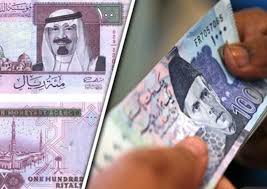Riyal to PKR
The exchange rate between the Saudi Riyal (SAR) and the Pakistani Rupee (PKR) plays a significant role in trade, investments, and remittances between Saudi Arabia and Pakistan. With thousands of Pakistanis working in Saudi Arabia and sending remittances back home, knowing the Riyal to PKR conversion rate is crucial for individuals and businesses alike. This guide provides detailed insights into the SAR to PKR exchange rate, the factors influencing it, and tips for getting the best exchange rate.
What is the Current Riyal to PKR Exchange Rate?
As of today, the exchange rate between 1 Saudi Riyal and the Pakistani Rupee is fluctuating, primarily due to shifts in the global economy. The rate can vary slightly between official bank rates and open market rates, making it essential to compare both before converting your money.
Typically, the Saudi Riyal is pegged to the US Dollar (USD), meaning its value is indirectly influenced by fluctuations in the dollar’s strength. This connection often impacts the Riyal to PKR exchange rate. As of recent updates, 1 SAR equals around 75 to 80 PKR in the open market, but this can vary depending on various factors like supply and demand, political events, and global market conditions.
Factors That Influence the Riyal to PKR Exchange Rate
1. Global Oil Prices
Saudi Arabia, as one of the largest oil-producing countries, has its currency linked to global oil prices. When oil prices are high, the Saudi economy flourishes, strengthening the Riyal. Conversely, when oil prices fall, it can lead to a weaker Riyal, affecting the Riyal to PKR exchange rate.
2. Remittances from Overseas Workers
The large Pakistani workforce in Saudi Arabia sends billions of dollars in remittances back home annually. These remittances play a vital role in influencing the SAR to PKR exchange rate. A higher influx of remittances increases the supply of Riyals in Pakistan, which can lead to favorable exchange rates for Pakistani Rupee recipients.
3. Political and Economic Stability
Both Saudi Arabia and Pakistan’s political and economic conditions greatly influence their respective currencies. For instance, political instability or economic slowdowns in Pakistan may weaken the PKR, making the Riyal stronger in comparison. On the other hand, any geopolitical events affecting Saudi Arabia, especially in terms of oil production, can also impact the value of the Riyal.
4. Inflation Rates
A country’s inflation rate can have a significant impact on its currency value. Higher inflation in Pakistan reduces the purchasing power of the Pakistani Rupee, thus increasing the Riyal to PKR exchange rate. Conversely, lower inflation helps stabilize the PKR.
How to Get the Best Riyal to PKR Exchange Rate
When converting Saudi Riyals to Pakistani Rupees, several tips can help you get the most favorable rate:
1. Compare Exchange Rates Across Platforms
Different money exchange platforms, such as banks, currency exchange companies, and online platforms, offer varying exchange rates. Always compare rates across these sources to ensure you get the best deal. Be cautious of hidden fees or poor conversion rates offered by less reputable providers.
2. Monitor the Market Regularly
Keep an eye on the exchange rate fluctuations to determine the best time for conversion. Online tools and apps can provide real-time updates on the Riyal to PKR exchange rate, allowing you to make informed decisions.
3. Choose a Trusted Money Exchange Service
Using a trusted and well-established exchange service can save you from potential losses. Look for services that are transparent about their fees and offer a competitive rate. Trusted services often have a low margin between the buy and sell rates, ensuring you receive more value for your Riyal.
Impact of Riyal to PKR on Pakistani Economy
1. Trade Between Saudi Arabia and Pakistan
Saudi Arabia is a key trading partner of Pakistan, and the Riyal to PKR exchange rate directly affects the trade balance. When the Riyal strengthens against the PKR, Pakistani exports to Saudi Arabia become cheaper, making them more attractive. However, imports from Saudi Arabia, including oil, become more expensive, potentially increasing Pakistan’s trade deficit.
2. Impact on Remittances
A strong Riyal to PKR rate benefits families in Pakistan who receive remittances from relatives working in Saudi Arabia. A higher exchange rate means more Pakistani Rupees for each Saudi Riyal, providing greater support to households and boosting consumer spending in the country.
3. Investment Opportunities
A favorable exchange rate can also attract Saudi investors to Pakistan, particularly in sectors like real estate, infrastructure, and manufacturing. When the PKR is weak, foreign investors may find investment opportunities more appealing due to the lower costs of goods and services in Pakistan.
Long-Term Outlook for Riyal to PKR Exchange Rate
While short-term fluctuations in the Riyal to PKR exchange rate are common, the long-term trend largely depends on the economic policies of both countries, as well as global factors such as oil prices and US dollar strength. With the Saudi Riyal pegged to the US Dollar, any significant changes in US monetary policy will indirectly influence the Riyal and its value against the PKR. Also, choose the safe and secure way to transferring money from Pakistan to USA.
Future Projections
Experts predict that the Riyal to PKR rate will continue to be influenced by remittance flows, oil prices, and economic stability in Pakistan. As Saudi Arabia looks to diversify its economy beyond oil under its Vision 2030 plan, the stability of the Saudi Riyal could improve, potentially making the Riyal a more attractive currency for global investors.
Conclusion
Understanding the Riyal to PKR exchange rate is crucial for individuals and businesses involved in remittances, trade, and investment between Saudi Arabia and Pakistan. By staying informed about the factors that influence this exchange rate, you can make smarter decisions when converting currency and planning your financial moves.




